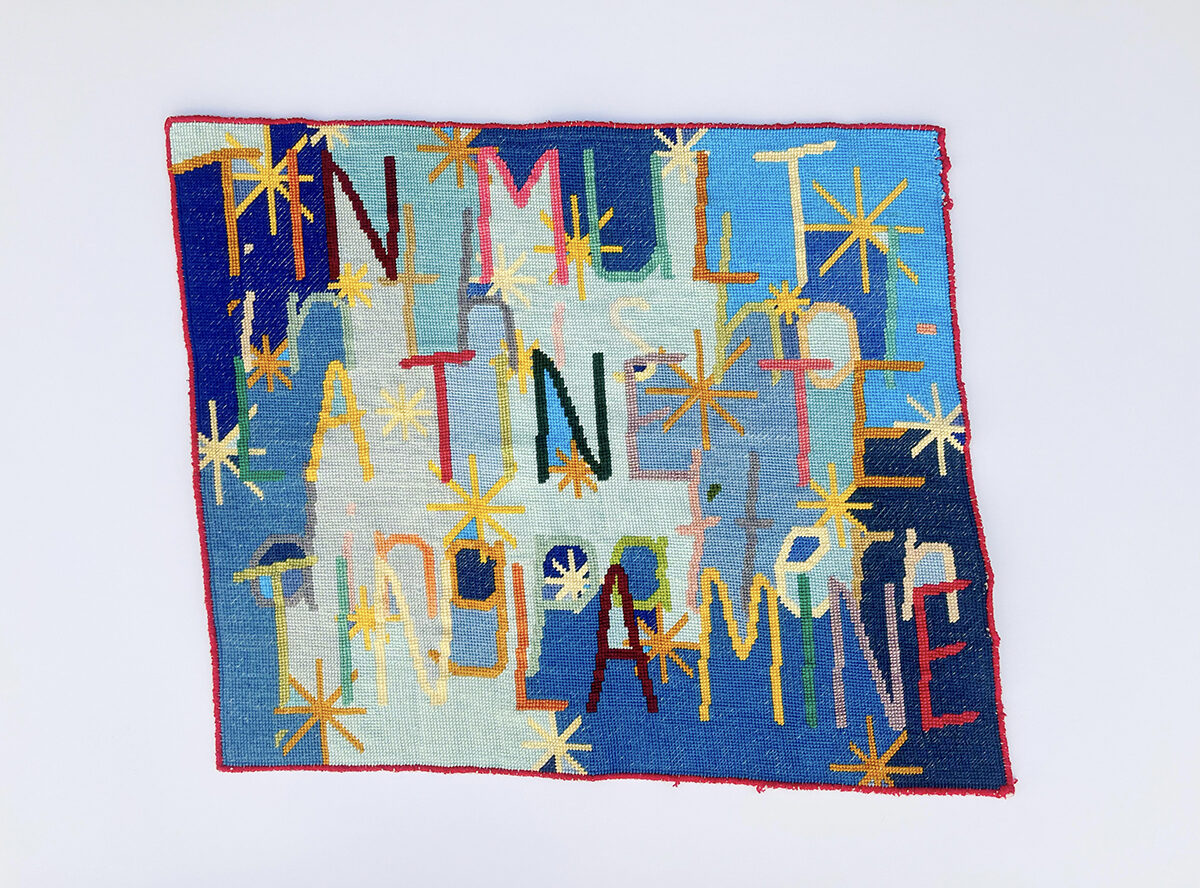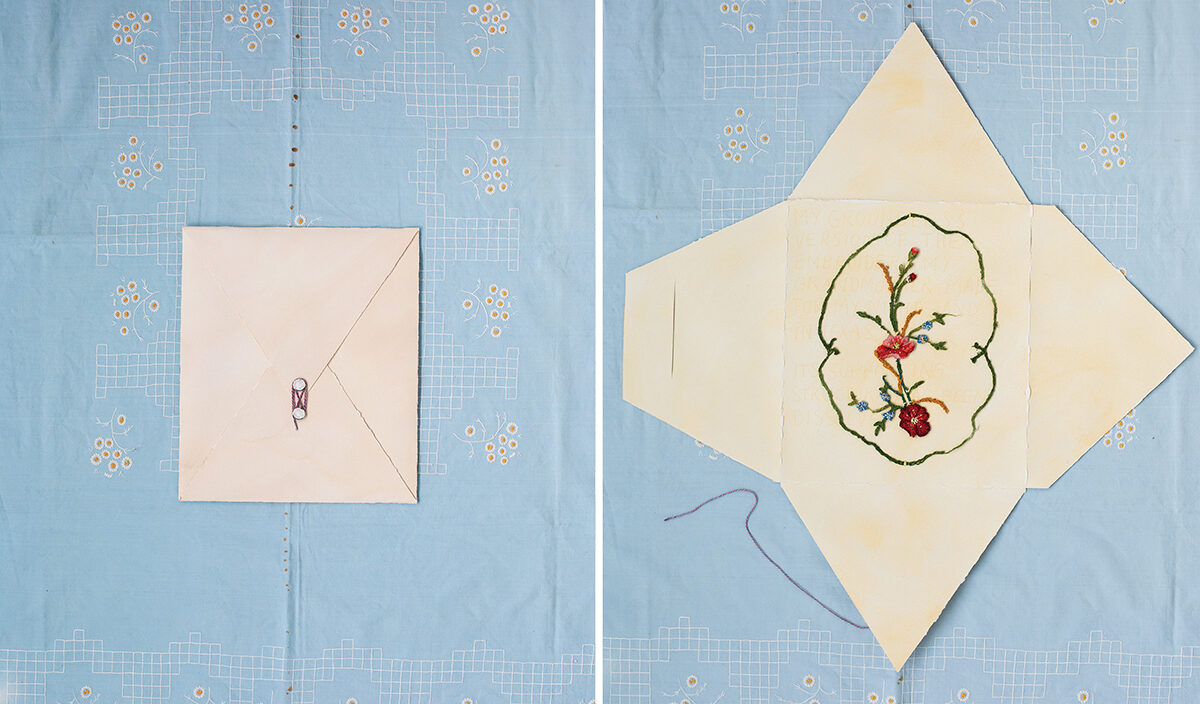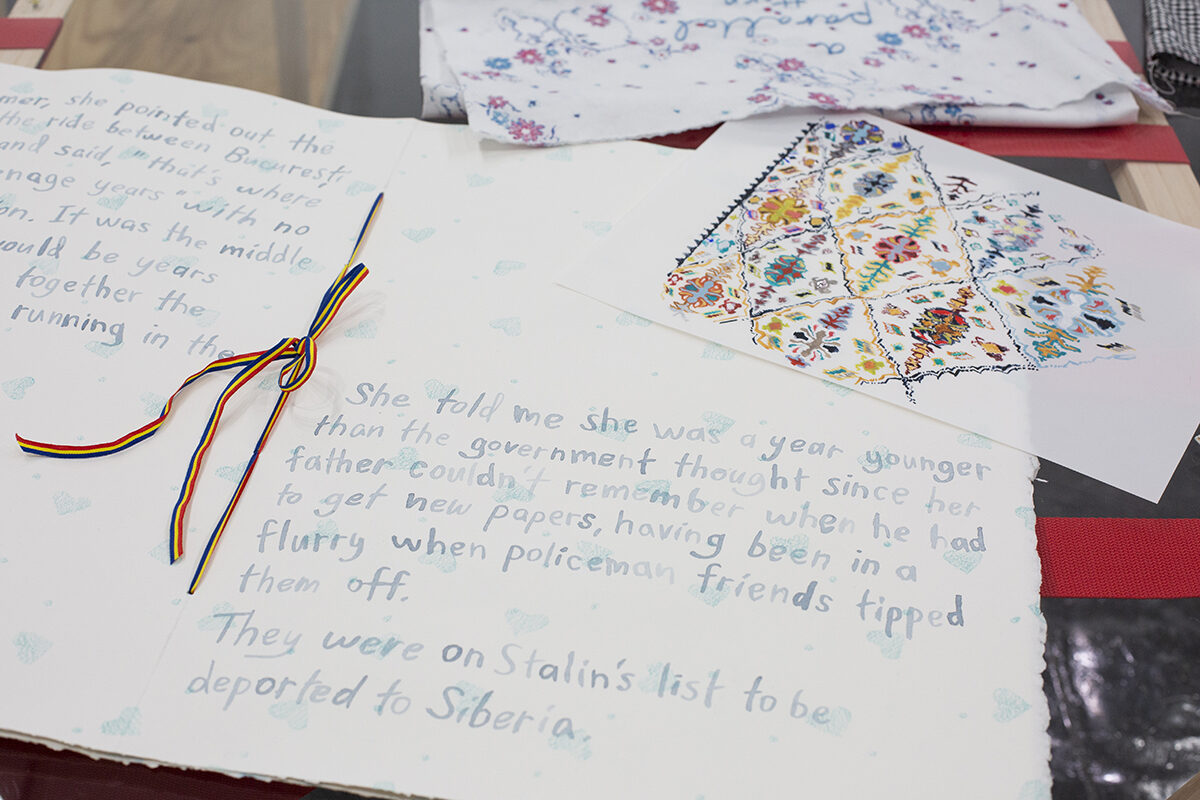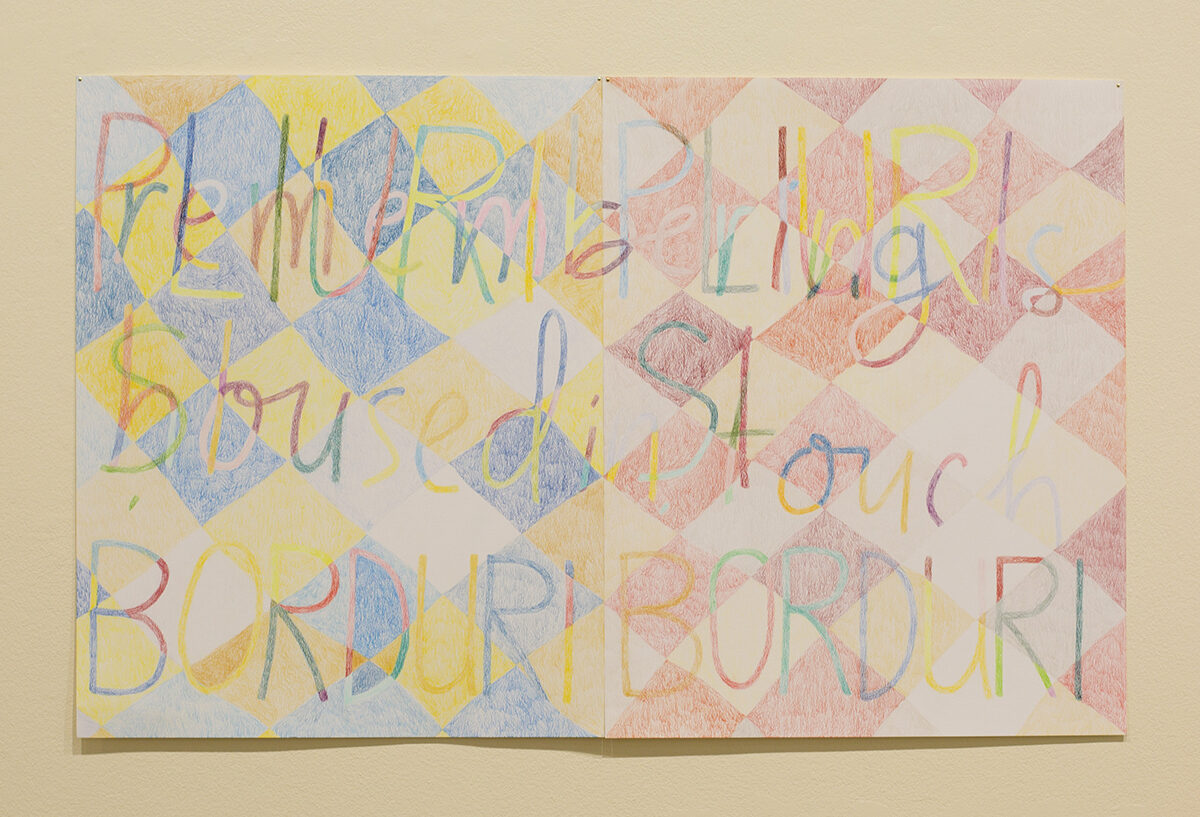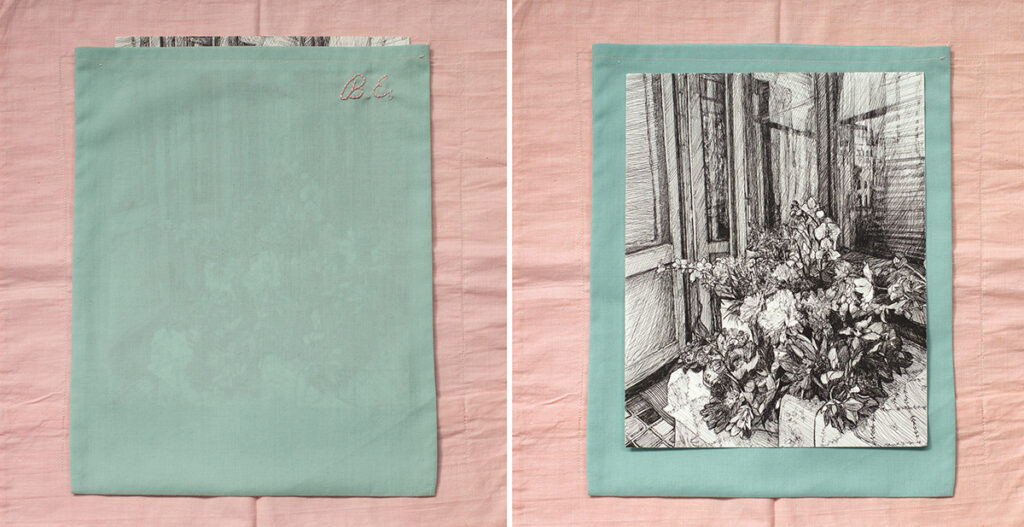
Born to academics in Romania, Diana Antohe grew up in Dallas, Texas. During her senior year at Southern Methodist University, she became a naturalized citizen of the United States, and she recalls being struck by the weight of the Naturalization Oath of Allegiance: I absolutely and entirely renounce and abjure all allegiance and fidelity to any foreign prince, potentate, state, or sovereignty. “It felt so heavy to me,” she says. “That’s what shifted things—it felt urgent to bring my connection, my heritage, into the forefront of what I was doing with my work.” Five years later, at Virginia Commonwealth University, Antohe’s MFA thesis, Parallel Pattern, juxtaposed her childhood summers spent with her grandparents in the Romanian countryside with returning to Dallas at the start of each school year.
Antohe’s grandmother’s family was forcibly displaced from Moldova during the Stalinist purges, and Antohe grew up hearing stories of how her relatives created a sense of home through sewing and embroidering, making use of limited resources under strict communism. “My grandmother could create beauty in this scrappy way,” she explains. For Parallel Pattern, Antohe meticulously recreated textile motifs that she found in her grandparents’ house, combining them into a large, multimedia, one-room exhibition. She filled it with hand-embroidered replicas of her grandmother’s pillowcases or paper ephemera that she had brought back home to the United States at the end of each summer—items small enough to easily stash in a suitcase. “If I have a tiny folder-sized painting with me, maybe that brings me closer to them,” she says. In her recent textile works and paintings, including her series, Soft Pleats, Antohe blends English and Romanian words her color palettes reflective of the Romanian flag. She hopes that her work, with its blend of family history, longing, nostalgia, and pride in her Romanian heritage, leaves viewers with a sense of renewed love for their own family and culture. “We make art to connect to ourselves,” she says, “and connect to others.”

